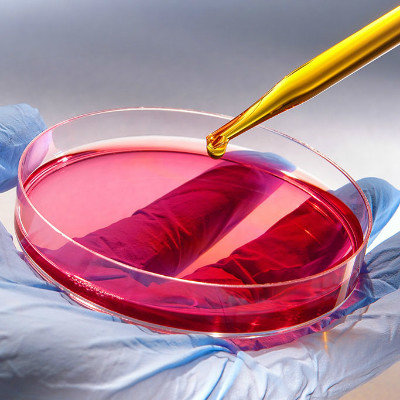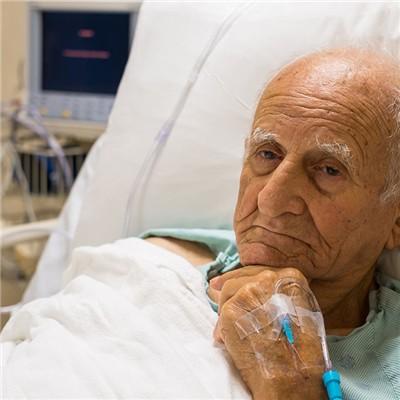Symptoms of gastrocnemius myositis
summary
The early prominent clinical manifestation of gastrocnemius myositis is tenderness of gastrocnemius muscle, which can be bilateral or unilateral occasionally, with different degrees. Light only feel leg swelling, pressure of mild pain, severe leg pain, can't walk, refuse to press. Leptospirosis, referred to as leptospirosis, is an animal borne infectious disease caused by pathogenic leptospirosis. Rodents and pigs are the main sources of infection, which are worldwide epidemic. It is characterized by early leptospiral sepsis, mid-term organ damage and dysfunction, and late anaphylaxis. Severe patients may have liver and kidney failure and diffuse pulmonary hemorrhage, which often endanger the life of patients. The symptom of gastrocnemius myositis? Let's talk about it.
Symptoms of gastrocnemius myositis
(1) The early stage (leptospiremia stage) is mostly within 3 days after the onset of the disease. The prominent manifestations of this stage are: 1. Most patients had a sudden onset, accompanied by chills and chills. The body temperature can be as high as 39 ℃ in a short time. Common flaccid fever, sometimes also can be missed heat, a few intermittent heat. 2. Headache is more prominent and myalgia occurs all over the body, especially in gastrocnemius or neck muscle, lumbodorsal muscle, thigh muscle and thoracoabdominal muscle. 3. The whole body is weak, especially the soft legs are obvious, sometimes it is difficult to walk and can't get out of bed. 4. Conjunctival congestion has two characteristics. One is no secretion, pain or photophobia; The other is the persistent hyperemia, which still exists after the fever subsides. 5. Tenderness of gastrocnemius muscle, bilateral or even unilateral, with different degrees. Light only feel leg swelling, pressure of mild pain, severe leg pain, can't walk, refuse to press. 6. Systemic superficial lymph node enlargement, early onset can appear, more common in inguinal, axillary lymph nodes. Most of them are the size of soybeans or broad beans, tender, but no congestion, inflammation, and no suppuration. At the same time, gastrointestinal symptoms such as nausea, vomiting, anorexia and diarrhea may appear in this stage; Respiratory symptoms such as sore throat, cough, throat congestion, tonsillar enlargement. Some patients may have hepatosplenomegaly and bleeding tendency. Very few patients have toxic mental symptoms.

(2) The middle stage (organ injury stage) is about 3-14 days after the onset of the disease. After the early infection, poisoning and septicemia, the patients in this stage have organ injury manifestations, such as hemoptysis, diffuse pulmonary hemorrhage, jaundice, extensive bleeding of skin and mucous membrane, proteinuria, hematuria, tubular urine, renal insufficiency, meningoencephalitis, etc. The clinical manifestations of this stage are the main basis for the classification of pulmonary hemorrhagic type, jaundice hemorrhagic type, renal type and meningitis type. 1. Most patients with influenza typhoid are characterized by systemic symptoms. The onset was sudden, cold, fever (38-39 ℃), headache, conjunctival congestion, systemic myalgia, especially gastrocnemius, nasal congestion, sore throat, cough, etc. The clinical manifestations were influenza, upper respiratory infection or typhoid. No jaundice, no central nervous system symptoms, normal cerebrospinal fluid, no obvious lung lesions. It is the continuation of the early leptospiremia. The natural course of disease was 5-10 days. There are also a few serious patients with bleeding in the digestive tract, skin and vagina; Some of the severe patients mainly had gastrointestinal symptoms, such as nausea, vomiting and diarrhea. There may be hypotension or shock. 2. On the basis of leptospiremia, pulmonary haemorrhage type has cough, blood sputum or hemoptysis. According to the depth and breadth of chest X-ray lesions, and cardiopulmonary function, it can be divided into common pulmonary haemorrhage type and diffuse pulmonary haemorrhage type. (1) common pulmonary haemorrhage type: it is similar to leptospiremia in clinic, accompanied by hemoptysis or blood sputum of different degrees, chest signs are not obvious, X-ray shows mild pulmonary lesions (increased lung texture), if not treated in time, it can also be converted to pulmonary diffuse haemorrhage type. (2) pulmonary diffuse hemorrhagic type (pulmonary massive hemorrhagic type): after the Leptospira invades the human body, 2-3 days after the incubation period and the early stage of infection, the face suddenly appears pale, and then the heart rate and respiration increase, panic, irritability, and finally enter the circulatory and respiratory failure. Both lungs are full of moist rales, and hemoptysis is aggravating, but there may be no hemoptysis. The main cause of death in recent years is extensive intrapulmonary hemorrhage, which is a common cause of non icteric leptospirosis. X-ray showed diffuse patchy soft shadow in both lungs. When the patient died, a lot of blood gushed from his mouth and nose until he died. If penicillin and hydrocortisone can be used in time, most of the patients will get a turn for the better. Their symptoms will be improved within 3-5 days, and their physical signs will be relieved quickly. Most of the lung lesions will disappear completely within 2-4 days. According to the research of West China Medical University on this type, it is believed that this is due to the hypersensitivity of the body to pathogens and toxic substances.

(3) In convalescent or late onset stage, the symptoms gradually subside after fever subsides, but there are also a few patients who have fever again after fever subsides for several days to three months or so, which is called late onset. 1. The fever reappeared 1-5 days after the first fever subsided, generally at 38-38.5 ℃. Half of the patients had increased eosinophils in the peripheral blood. The fever subsided in 1-3 days regardless of medication. Very few patients may have fever for the third time (about 18 days after onset), which will subside naturally within 3-5 days. 2. Posterior ophthalmopathy is more common in the north, which may be related to Pomona type. One week to one month after illness, uveitis, iridocyclitis and choroiditis are common, scleral episcleritis, retrobulbar optic neuritis and body opacification also occur. 3. Neurologic sequelae (1) reactive meningitis a few patients have fever and meningitis symptoms, but the cerebrospinal fluid examination is normal, and they can self heal if they are not treated. (2) aortoarteritis obliterans, also known as moyamoya disease, is one of the most common and serious complications in the nervous system of leptospirosis. In 1961, Takeuchi first reported that since 1958, China has been a sporadic epidemic of cerebral arteritis of unknown origin among rural children and young adults in Hubei, Guangdong, Zhejiang and other epidemic areas. In 1973, Leptospira infection was confirmed. The incidence rate is about 0.57% of children with leptospirosis, 90% of children under 6.45%.15 years old, and the rest of them are young adults. There was no difference in incidence rate between men and women. The peak of incidence of leptospirosis was more than one quarter later than that of local leptospirosis, that is, from October to December, and the longest symptom appeared 9 months after the disease. The manifestations were hemiplegia, aphasia, repeated and transient limb paralysis. Cerebral angiography confirmed stenosis of the superior clinoid segment of the internal carotid artery and the proximal part of the anterior middle cerebral artery. Most of them had a specific vascular network in the basal ganglia. Leptospira can be found occasionally in autopsy brain tissue, and the prognosis is poor. In addition to the neurological sequelae mentioned above, there are also reports of peripheral nerve injury and spinal cord injury.

matters needing attention
The phenol inactivated Leptospira vaccine was prepared according to the main epidemic strains in the area. At present, the chemical comprehensive medium without serum or other proteins or the semi comprehensive medium without rabbit serum instead of a small amount of albumin, cheese or human placenta tissue fluid are widely used in China. There are two types of vaccines: 3-valent (e.g. jaundice hemorrhagic type, autumn type, other local strain type) and 5-valent (jaundice hemorrhagic type, dog type, cold and typhoid type, Pomona type, autumn type or Australian type). Most of the 3-valent vaccines are ordinary ones (about 200 million bacteria / ml), which can also be made into concentrated ones (about 600 million bacteria / ml), and the 5-valent vaccines can also be made into ordinary and concentrated ones. The human body can produce immunity to Leptospira homotype and maintain it for about one year.













